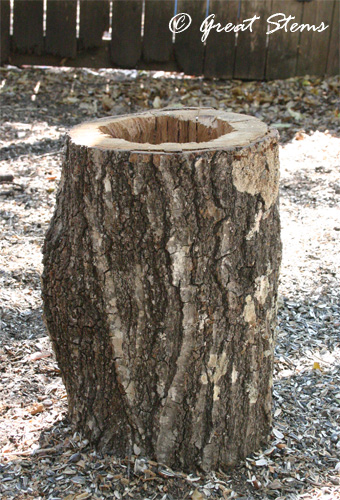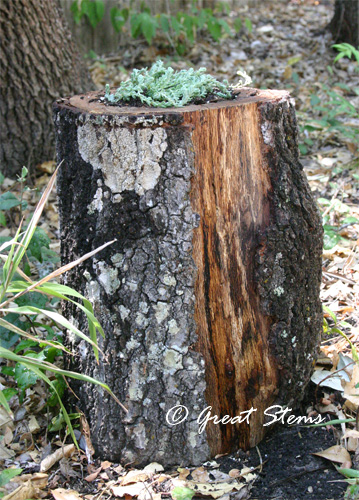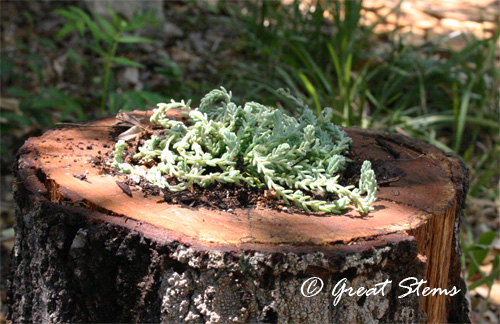I went outside to take a picture of a lovely blooming and ever so drought-tolerant little shrub in the garden, only to discover that its blooms had come and gone. I’ll have to catch it on the next bloom cycle, because I love it so (it’s called a Pyramid Bush). But what did catch my eye were some of the objects decorating our fence, and I realized that I’d never actually posted about them.
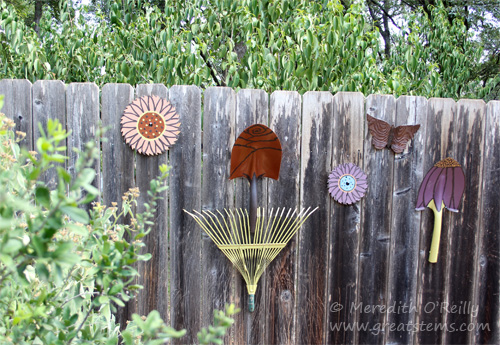
From time to time, tools break beyond repair, and I hate to see them go to waste. It’s amazing what a bit of paint can do.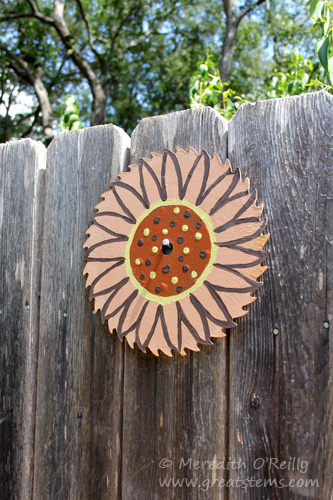
This saw blade isn’t technically a garden tool, but it certainly has helped build things for the garden. It makes a perfect flower.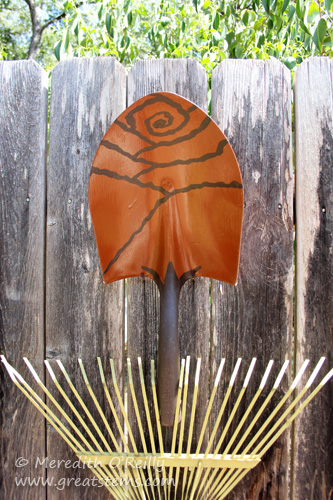 How about a shovel that becomes a rose, with a rake as the foliage? The rake is actually painted a light green, but in the sun it looks more yellow than lime, I admit. Someday, if I happen to have a different color of leftover paint, I might paint over it, but part of this endeavor is utilizing what I have at home, not going out and buying something.
How about a shovel that becomes a rose, with a rake as the foliage? The rake is actually painted a light green, but in the sun it looks more yellow than lime, I admit. Someday, if I happen to have a different color of leftover paint, I might paint over it, but part of this endeavor is utilizing what I have at home, not going out and buying something. 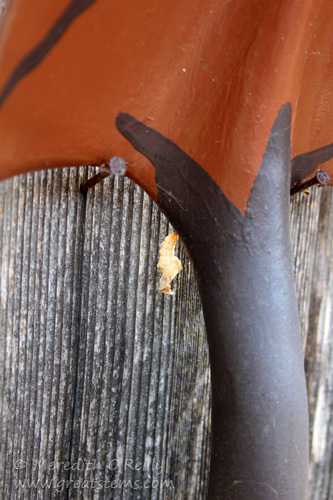
Look what I found behind the rose shovel — a spent Gulf Fritillary chrysalis. That little caterpillar crawled a long way across the garden to become a butterfly!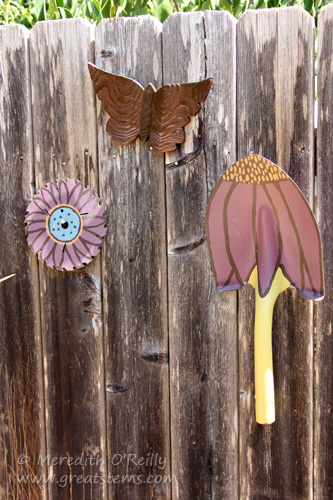 A smaller sawblade gave an opportunity for another bloom, and a second shovel blade became a Purple Coneflower. The coneflower might be my favorite of the tool bouquet, honestly. The butterfly isn’t a leftover tool, obviously, but a gift from sweet friends.
A smaller sawblade gave an opportunity for another bloom, and a second shovel blade became a Purple Coneflower. The coneflower might be my favorite of the tool bouquet, honestly. The butterfly isn’t a leftover tool, obviously, but a gift from sweet friends.
Some day I might paint some stems on the fence to complete all the flowers. I had saved a broken garden hose to be the stems, but the pieces are more complicated to hang and I just haven’t been inspired yet to do so.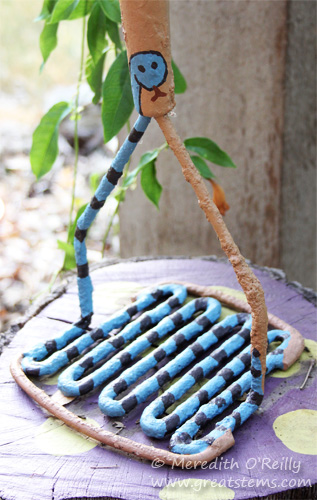
A little too awkward to hang on the fence, this tool gets its own stand. The broken mud masher, formerly used to mix cement, inspired a serpentine theme. By the way, it’s sitting on a painted log — we have a few such logs in different colors around the backyard woodlands, and they add a nice touch of color here and there.
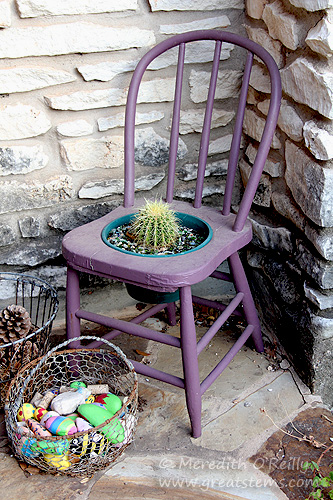
Though this painted old chair (I’ve always called it a potty chair, but I don’t know if that’s really what it once was) isn’t exactly a former tool and nor is it broken, I thought I should include it with the group of colorful, re-purposed objects around the garden. I painted it a few years ago and added a Golden Barrel Cactus for mischievous fun. Just don’t sit on it!
Got any fun ways you give broken tools a new life?
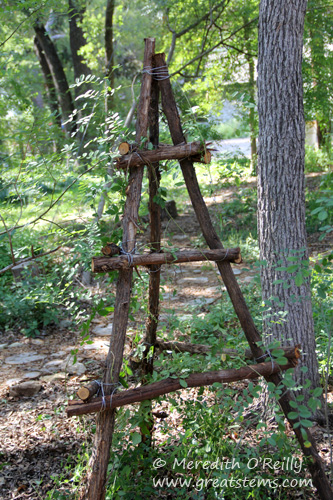
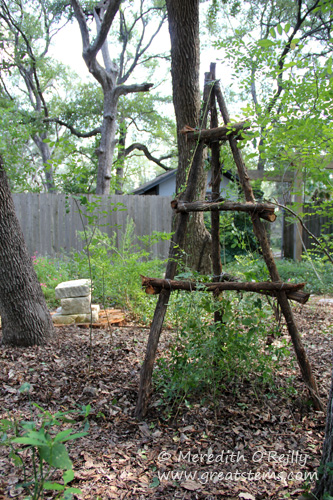
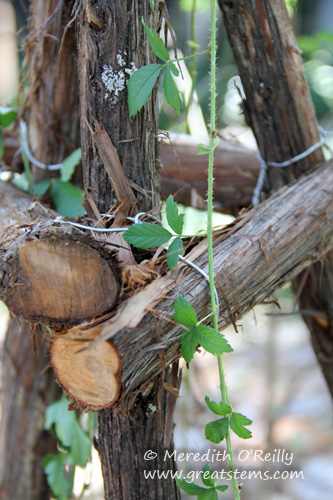
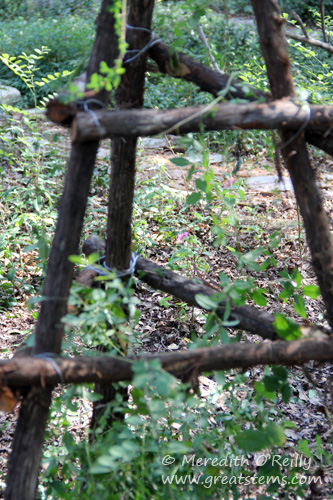
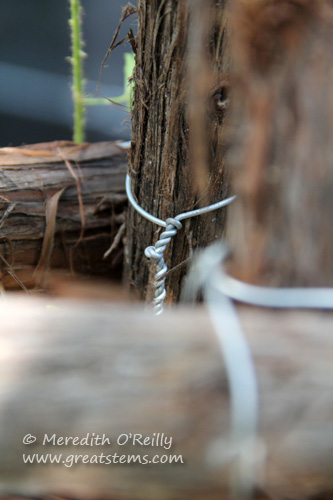
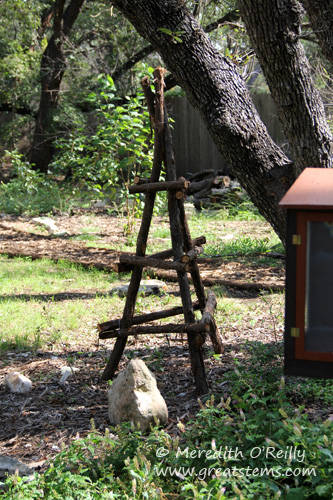
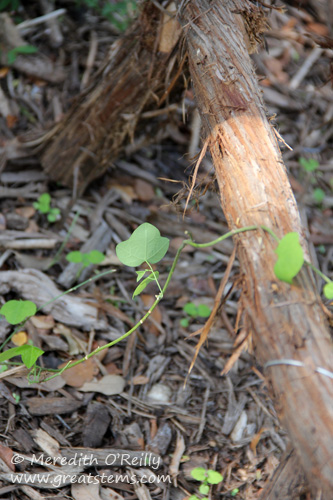
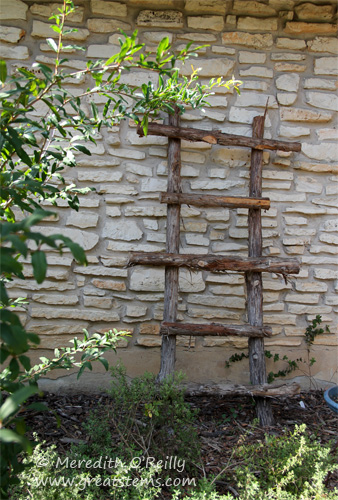
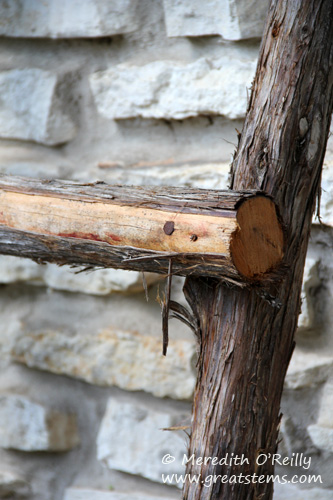
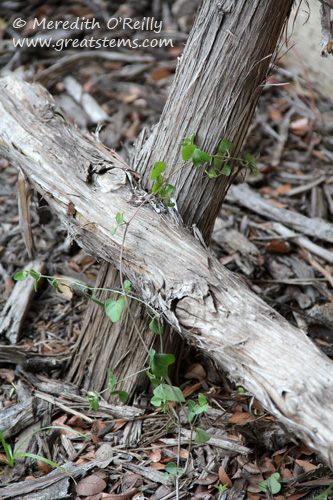
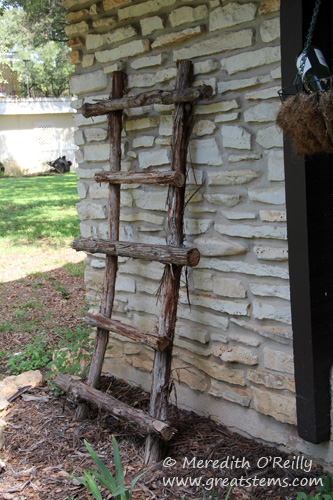
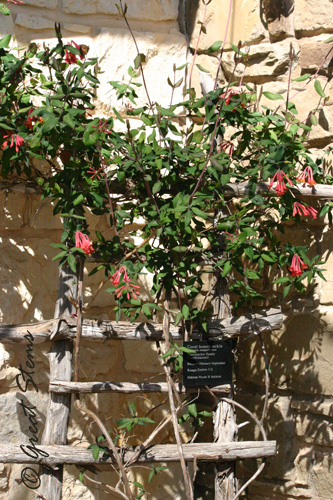
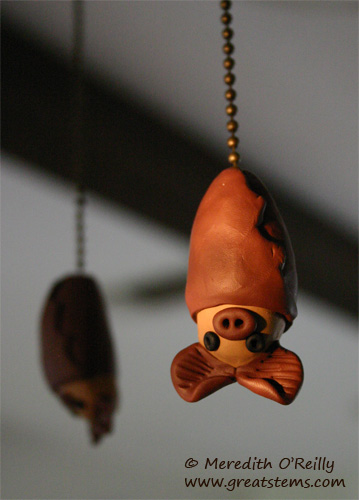
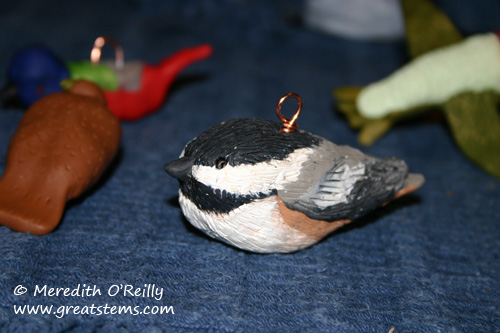
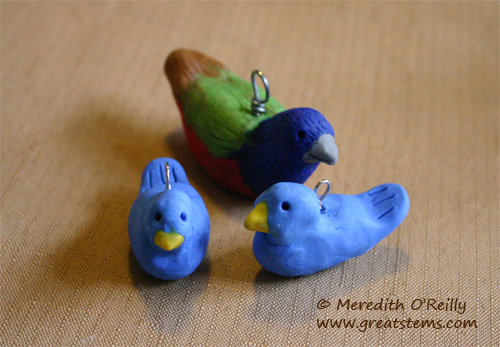
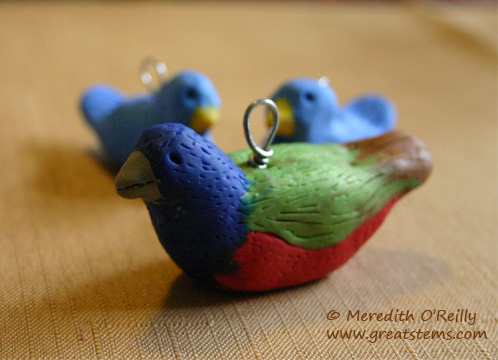
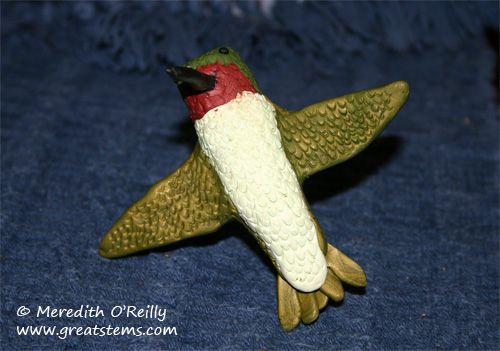
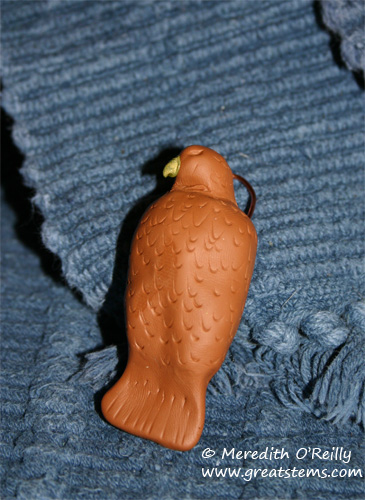
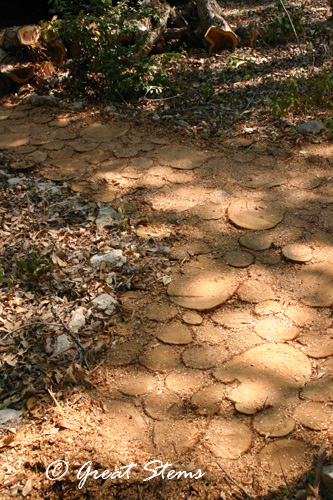
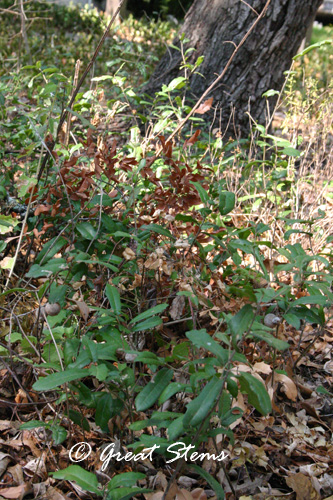
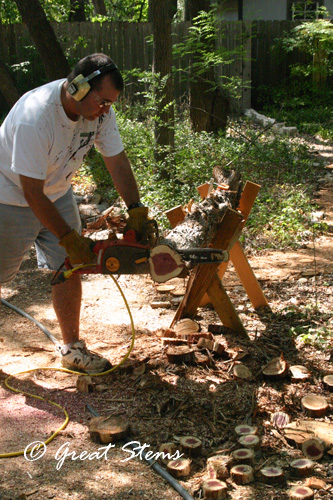
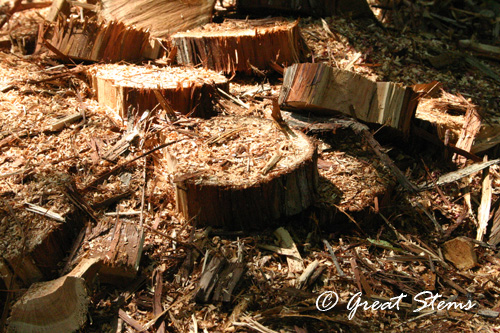
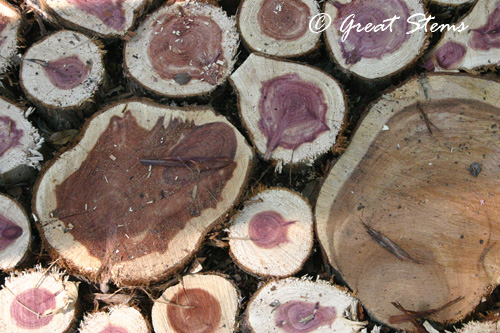
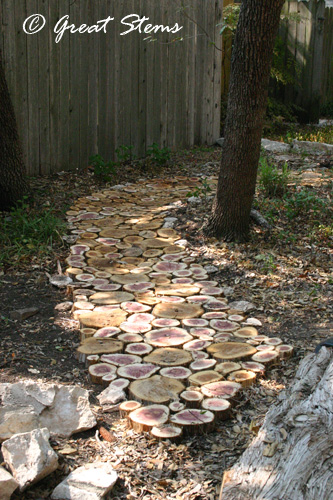
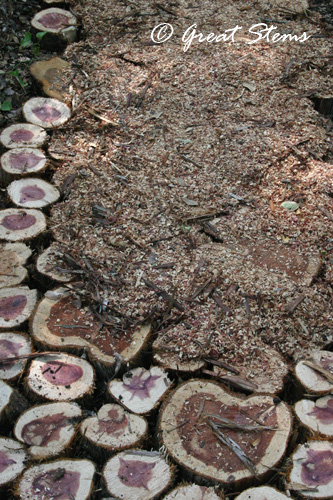
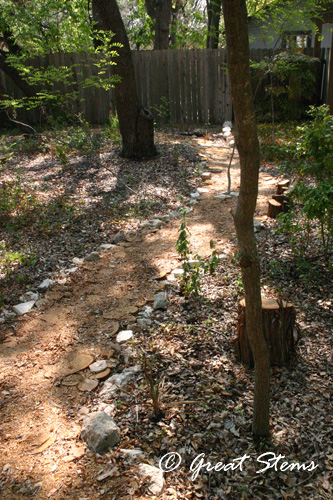
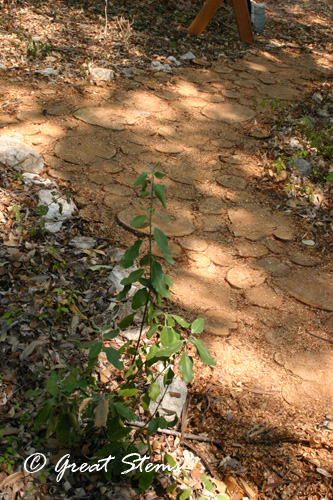
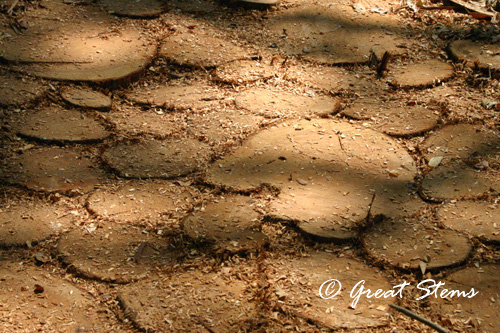 The logs are staying nicely in place, human- and wildlife-tested. Were this path in our backyard, I’m certain that our big, rambunctious dogs might test it to its limits, though.
The logs are staying nicely in place, human- and wildlife-tested. Were this path in our backyard, I’m certain that our big, rambunctious dogs might test it to its limits, though.